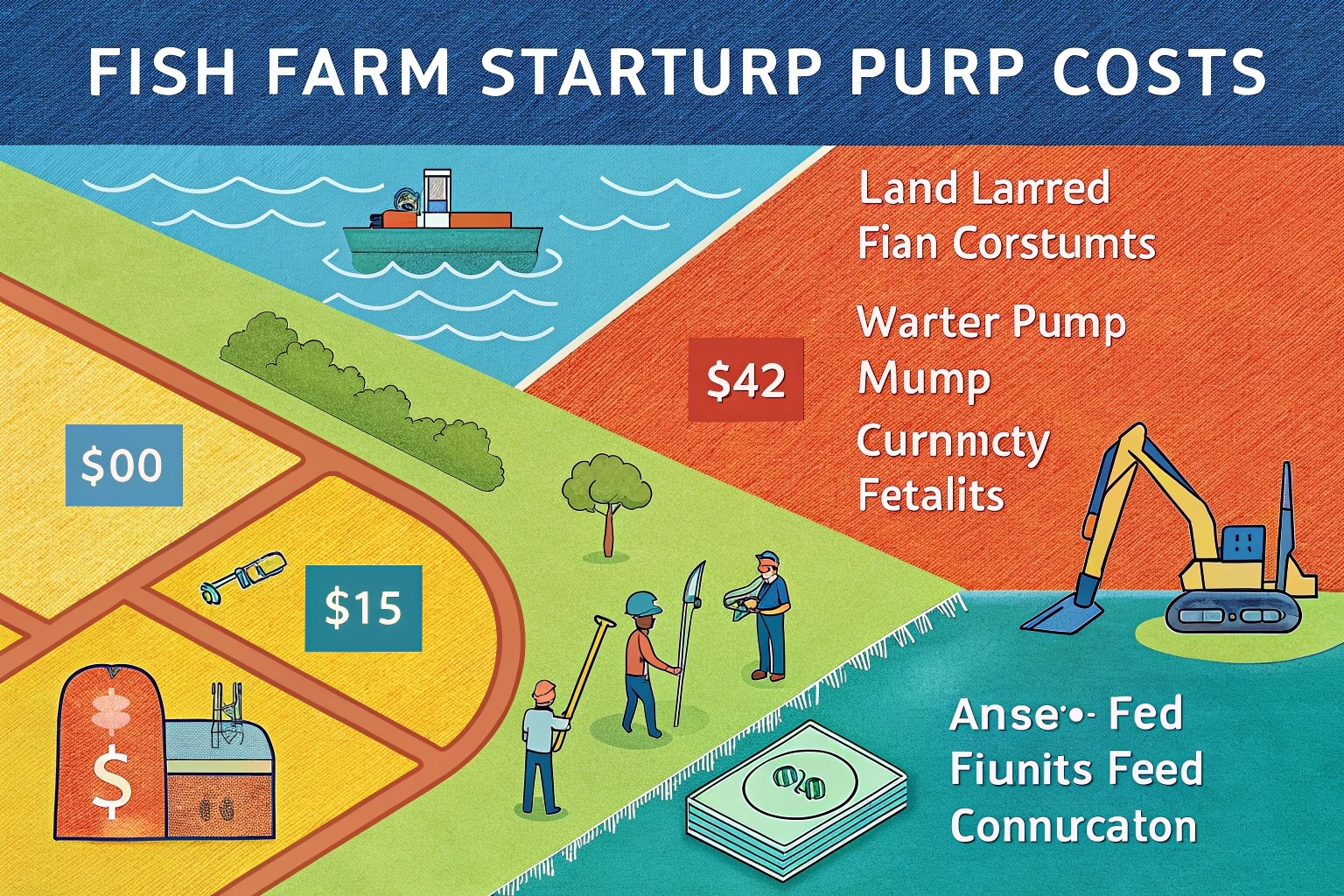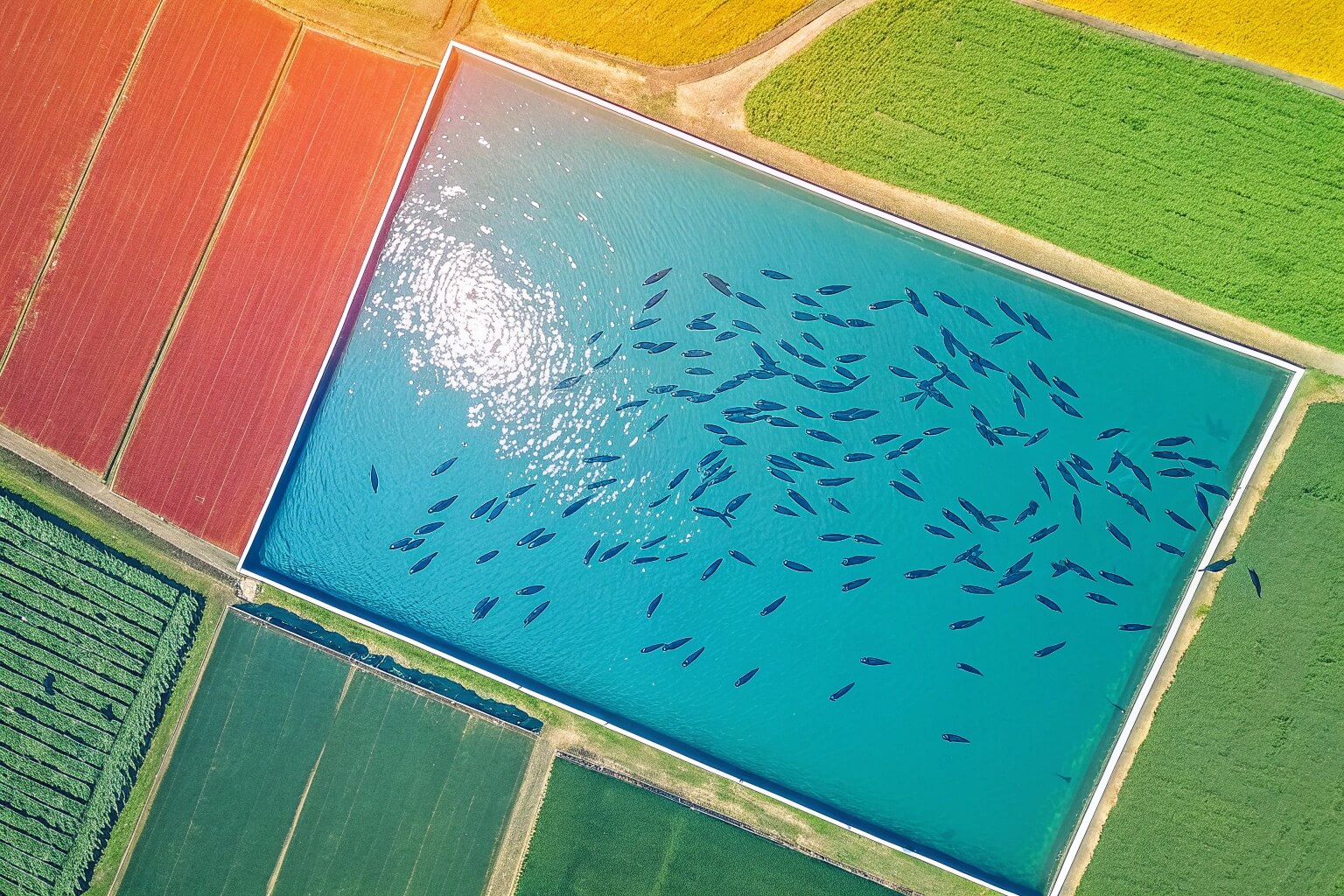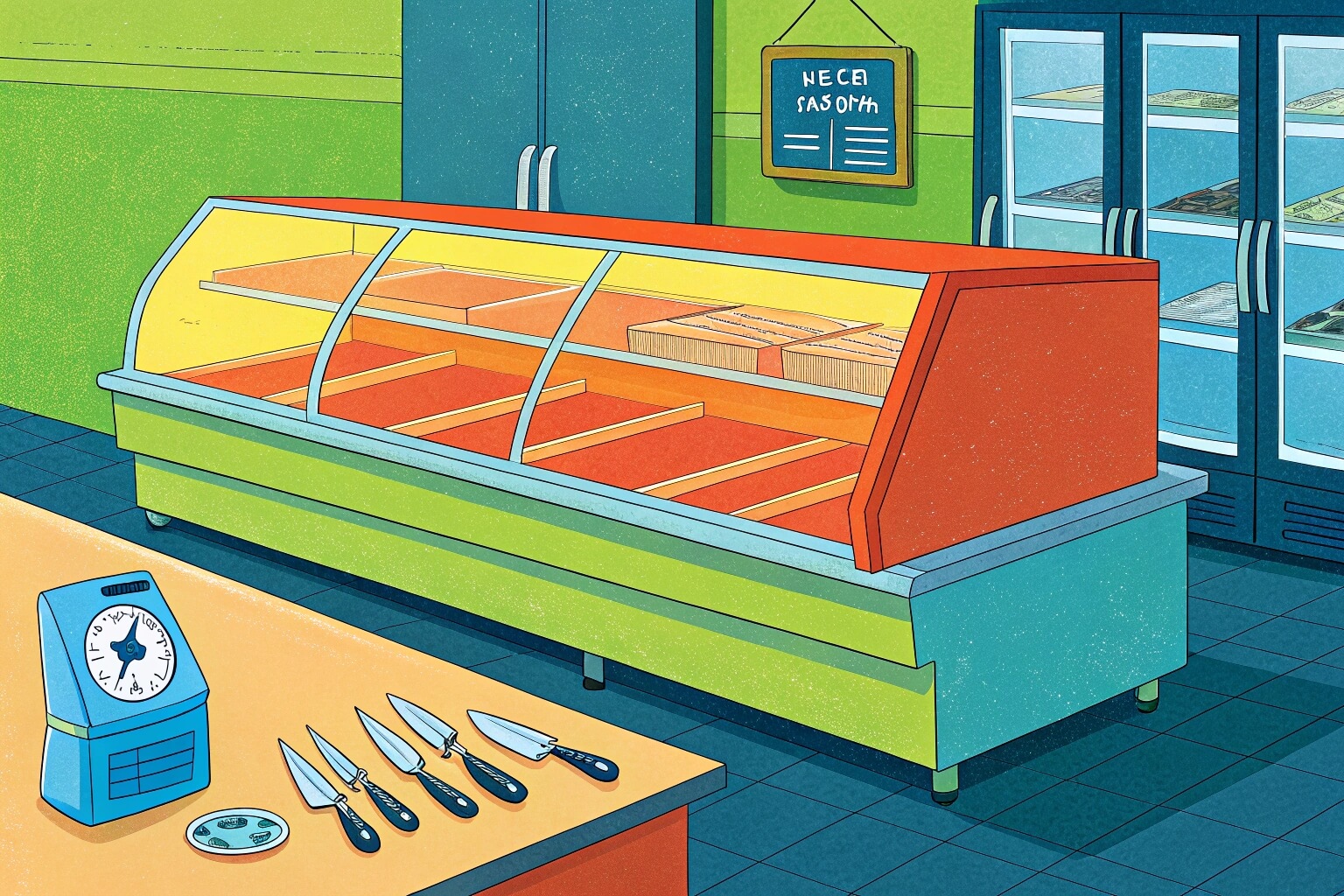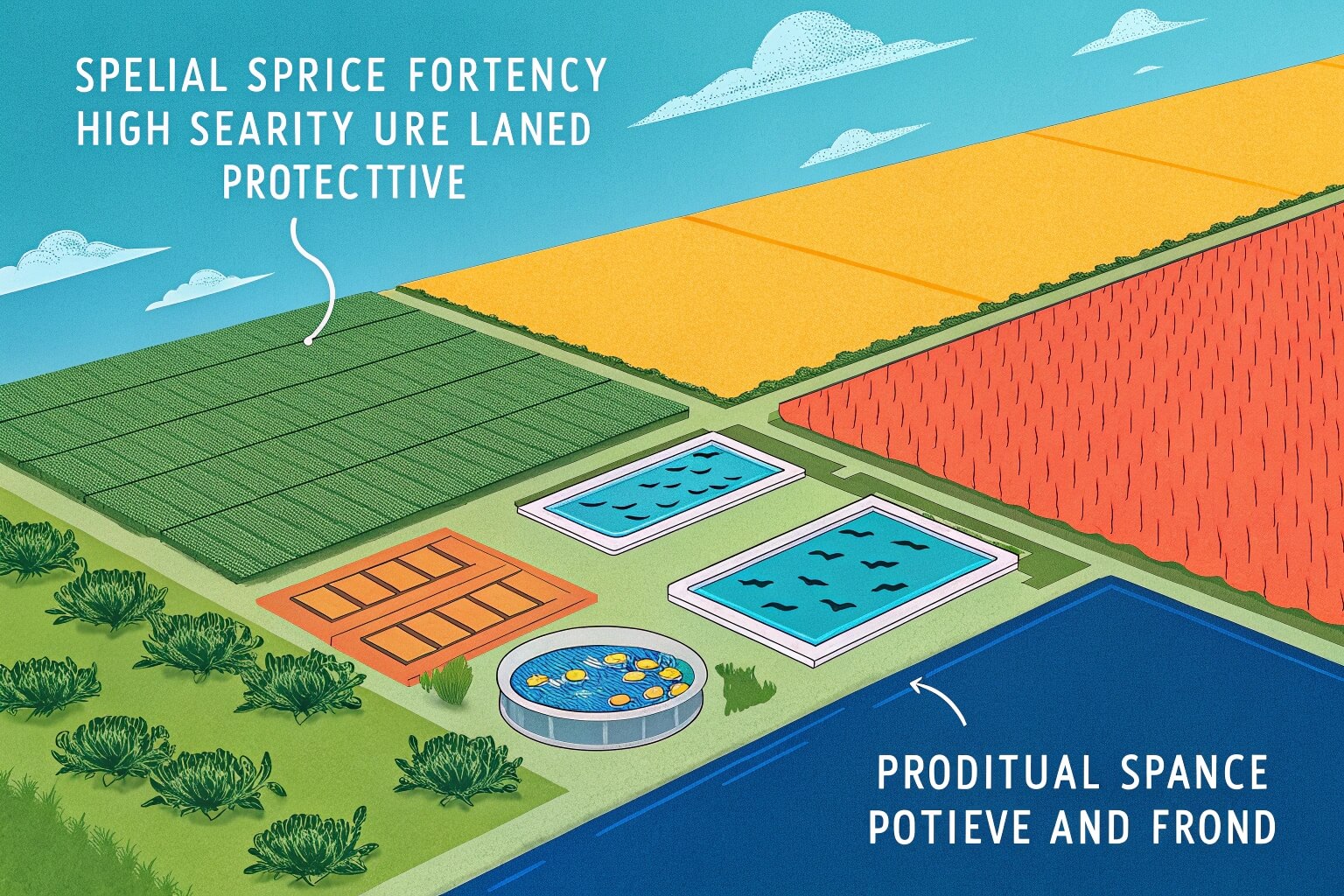How much does it cost to start a fish farm?
Thinking about diving into fish farming but worried about the startup costs? It's a common concern, as the initial investment can seem like a big hurdle. Let's break it down.
Starting a fish farm can cost anywhere from a few thousand dollars for a small-scale operation to over a million for a large commercial venture. Key expenses include land, pond construction or tanks, fish stock, feed, equipment, labor, and permits.

Understanding the different cost components is the first step toward planning your fish farming business. Let's look closer at some specific questions you might have.
What size pond for 1000 fish?
Need to house 1000 fish but not sure how much space you actually need? Getting the pond size wrong can waste money or stress your fish, impacting their growth.
Generally, to raise around 1000 fish like tilapia or catfish, you'll need a pond size of about 0.1 to 0.2 hectares (1000-2000 square meters, or roughly 0.25-0.5 acres). The exact size depends heavily on the fish species and your management system.

Several factors influence the ideal pond size, and simply digging a hole isn't enough. You need to consider the specific needs of your fish and how you plan to manage the environment. Different approaches will require different amounts of space.
Factors Influencing Pond Size
The right size isn't just about area; it's about volume and water quality.
- Species: Some fish tolerate crowding better than others. Tilapia are quite hardy, while species1 like trout need more space and excellent water quality2. Research the specific density recommendations for the fish you plan to raise.
- Management Intensity: Are you planning an extensive system (low density, less intervention) or an intensive one (high density, requires aeration and filtration)? Intensive systems allow more fish per unit area but demand more technology and management.
- Water Quality: Maintaining good oxygen levels and removing waste is crucial. Larger ponds offer more natural buffering, while smaller or more densely stocked ponds need active management like aeration systems.
Pond Types and Space Requirements
The type of container also affects space efficiency.
- Earthen Ponds: These are common and relatively cheap to construct if you have suitable land. However, they often require more surface area per fish compared to tanks.
- Tank Systems: Concrete, plastic, or frame tanks (like the collapsible PVC tanks we offer at Bancy Solutions) allow for higher stocking densities in a smaller footprint. Our collapsible fish tanks, for example, use a durable PVC liner supported by a galvanized steel or plastic frame. They are easy to set up and can be placed almost anywhere, reducing the need for extensive land preparation. This makes them a great option if space is limited or land costs are high.
Here's a simple table showing estimated space needs for common fish:
| Fish Species | Typical Stocking Density (Fish per cubic meter in tanks)3 | Estimated Pond Area for 1000 Fish (Intensive Earthen Pond)4 |
|---|---|---|
| Tilapia5 | 50-150 | ~1000 sq meters (0.1 ha) |
| Catfish | 100-300 | ~1500 sq meters (0.15 ha) |
| Carp | 10-50 | ~2000 sq meters (0.2 ha) |
Remember, these are estimates. Always consult specific guidelines for your chosen species and system.
What is the most profitable fish to farm?
You want your fish farm to make money, but choosing the right species feels like a gamble? Picking a fish that doesn't sell well or costs too much to raise can sink your business quickly.
Profitability depends heavily on your local market, startup costs, and operating expenses. Fast-growing, popular fish like Tilapia and Catfish often provide reliable returns. High-value species like Salmon or Barramundi can offer higher margins but usually require more investment and expertise.

Choosing the "most" profitable fish isn't a one-size-fits-all answer. You need to balance market demand, growth rates, feed conversion efficiency, and the selling price against the costs of fingerlings, feed, and management.
High Volume vs. High Value Strategy
You generally have two paths to profit:
- High Volume, Lower Margin6: Fish like Tilapia and Catfish grow relatively quickly, are resilient, and have broad market acceptance. Feed costs are manageable, and large quantities can be produced. Profit comes from selling many fish at a moderate price. This is often a good starting point for beginners. From my observation, Tilapia7 is popular due to its adaptability and consistent demand.
- Lower Volume, High Margin8: Species like Salmon, Trout, Shrimp, or Barramundi fetch higher prices in the market. However, they often require specific conditions (like cooler water for trout/salmon), more sophisticated systems, higher feed costs, and potentially longer grow-out periods. The profit per fish is higher, but the risks and initial investment can also be greater.
Market and Operational Considerations
Beyond the fish itself, consider these factors:
- Local Demand: What kind of fish do people in your area actually buy and eat? Is there a specific niche (e.g., restaurants, ethnic markets) you can target?
- Feed Costs: Feed is often the largest operational expense. Look at the Feed Conversion Ratio (FCR) – how much feed it takes to produce 1kg of fish. Lower FCR is better.
- Climate and Resources: Can you provide the right water temperature and quality for your chosen species year-round? Do you have access to reliable fingerling suppliers?
Here’s a comparison of factors for a few species:
| Fish Species | Growth Rate9 | Feed Cost10 | Market Price | Input Costs | Overall Profit Potential11 |
|---|---|---|---|---|---|
| Tilapia | Fast | Moderate | Moderate | Low-Moderate | Good (Volume-based) |
| Catfish | Fast | Moderate | Moderate | Low-Moderate | Good (Volume-based) |
| Salmon | Moderate | High | High | High | High (Margin-based) |
| Carp | Moderate | Low | Low-Moderate | Low | Moderate |
Ultimately, thorough market research combined with an honest assessment of your resources and expertise will guide you to the most profitable choice for your specific situation.
How much does it cost to open a fish market?
Thinking about selling fish directly to customers by opening your own market? Setting up a retail space involves more than just finding suppliers; there are significant upfront and ongoing costs.
Opening a fish market typically costs between $20,000 and $200,000+, depending heavily on location, size, and equipment quality. Major expenses include rent or property purchase, refrigeration units, display cases, licenses, initial inventory, and staffing.

Setting up a fish market requires careful planning, especially regarding health regulations and maintaining freshness. The initial investment can be substantial, covering everything from the physical space to the fish you sell on day one.
Key Investment Areas
These are the big-ticket items you'll need to budget for:
- Location12: Renting or buying a retail space in a good location with foot traffic is crucial but often expensive. Factor in security deposits, potential renovations to meet health codes (e.g., proper drainage, non-porous surfaces).
- Equipment13: This is a major cost center. You'll need commercial-grade refrigerators and freezers, refrigerated display cases, ice machines, cutting surfaces, knives, scales, sinks, and potentially vacuum sealers or other processing equipment. Quality equipment is vital for food safety.
- Licensing and Permits14: Expect various business licenses, food handler permits, health department inspections and permits, and potentially specific licenses for selling seafood. These costs vary by city and state but are essential.
Operational Costs Breakdown
Beyond the setup, ongoing costs keep the market running:
- Inventory Sourcing: You need a reliable supply of fresh, high-quality fish. This involves building relationships with wholesalers, fishermen, or even local fish farms. Initial stock can be a significant upfront cost. Managing inventory to minimize spoilage is key.
- Staffing: Wages for knowledgeable staff who can handle fish properly and provide good customer service.
- Utilities: Electricity costs for refrigeration and lighting can be substantial. Water usage is also significant.
- Marketing: Signage, local advertising, and potentially an online presence to attract customers.
Here’s a rough estimate of startup costs:
| Expense Category | Low-End Estimate | High-End Estimate | Notes |
|---|---|---|---|
| Rent Deposit & Renovation15 | $5,000 | $50,000+ | Highly location-dependent |
| Refrigeration & Display | $10,000 | $80,000+ | New vs. used, size and number of units |
| Licenses & Permits16 | $500 | $5,000 | Varies greatly by jurisdiction |
| Initial Inventory17 | $2,000 | $15,000+ | Depends on variety and volume |
| Miscellaneous (Scales etc) | $1,000 | $5,000 | Point of sale system, tools, initial supplies |
| Total Estimated Startup | ~$18,500 | ~$155,000+ | Excludes property purchase, ongoing costs |
As I've seen with businesses, managing the supply chain effectively and understanding customer demand are critical for a fish market's success.
Is fish farming cheaper?
Wondering if fish farming is a more affordable alternative compared to other types of agriculture? Comparing costs directly can be tricky because the inputs and outputs are quite different.
Fish farming often requires a higher initial investment for infrastructure (ponds/tanks, plumbing, aeration) compared to some traditional field crops. However, it can potentially offer higher returns per unit of area and faster production cycles, possibly leading to better long-term profitability if managed well.

Comparing "cheaper" needs context – cheaper upfront, cheaper operationally, or cheaper per unit of output? Fish farming has unique cost structures that differ significantly from land-based crop farming or livestock rearing.
Comparing Startup Costs
Getting started often looks different:
- Land Use: Traditional farming needs large tracts of arable land. Fish farming18 can be land-intensive with large earthen ponds, but tank-based systems (like Bancy's collapsible tanks19) can operate on smaller, potentially non-arable plots, which might reduce land acquisition costs.
- Infrastructure: Basic crop farming might primarily need land prep and seed. Fish farming requires constructing ponds or installing tanks, plus water supply, drainage, and potentially aeration/filtration systems. This infrastructure is usually more expensive upfront than basic field preparation. Our PVC liner and frame tanks20 offer a relatively quick setup compared to concrete tanks or large earthen ponds.
- Initial Stock: Buying fingerlings (young fish) is comparable to buying seeds or young livestock.
Comparing Operational Costs and Returns
Ongoing expenses and revenue potential also differ:
- Inputs: Fish farming's major recurring cost is feed, which can be substantial. Traditional farming relies on fertilizer, pesticides, water (irrigation), and fuel for machinery. Cost comparison depends heavily on the specific crop vs. fish species.
- Yield per Area: Fish farming, especially intensive systems, can often produce more protein per unit area than traditional livestock or even some crops.
- Market Value: Fish often command a higher price per kilogram than many staple crops.
- Risks: Fish farming faces risks like disease outbreaks (requiring careful management and potential treatment costs) and water quality issues. Traditional farming faces weather risks, pests, and crop diseases.
Here's a very simplified comparison table (highly variable):
| Factor | Traditional Crop (e.g., Corn) | Fish Farming (e.g., Tilapia in Tanks) | Notes |
|---|---|---|---|
| Initial Investment/ha | Moderate (Land Prep, Seed) | High (Tanks, Systems, Stock) | Tank systems reduce land needs but increase setup cost |
| Annual Ops Cost/ha | Moderate (Fertilizer, Fuel) | High (Feed, Electricity) | Feed is a major driver for fish farms |
| Potential Revenue/ha | Moderate | High | Fish yield/value per area can be higher |
| Production Cycle | Seasonal (e.g., 1/year) | Faster (e.g., 6-9 months) | Allows potentially multiple harvests per year |
From my perspective, while the initial cash outlay for fish farming might be higher, the potential for greater productivity per unit area and strong market demand makes it an attractive venture. Success hinges on good management, technology adoption (like using durable, efficient tanks), and controlling those operational costs, especially feed.
Conclusion
Starting a fish farm involves various costs, from ponds to feed. Understanding these expenses, choosing the right fish, and managing resources wisely are key steps on the path to a successful operation.
I'm Carlos from Bancy Solutions. We specialize in high-quality, customizable liquid containment solutions like collapsible fish tanks. If you need durable, easy-to-install tanks for your aquaculture project, feel free to reach out. Visit us at www.bancysolutions.com or email [email protected] to discuss your needs.
-
Learning about different fish species will guide you in selecting the right ones for your aquaculture goals and conditions. ↩
-
Understanding water quality management is essential for successful fish farming, ensuring healthy fish and optimal growth. ↩
-
Understanding stocking density is crucial for maintaining a healthy aquatic environment and optimizing fish growth. ↩
-
Calculating the right pond area ensures adequate space for fish, promoting better health and yield in aquaculture. ↩
-
Tilapia is a popular fish for aquaculture; exploring its benefits can help you make informed farming decisions. ↩
-
Exploring this resource will provide insights into the advantages of starting with high volume fish like Tilapia, perfect for beginners. ↩
-
Discover why Tilapia is favored in aquaculture for its adaptability and market demand, making it a smart choice for new farmers. ↩
-
This link will help you understand the complexities and rewards of farming high-value species like Salmon and Trout. ↩
-
Understanding growth rates can help optimize fish farming practices and improve profitability. ↩
-
Exploring feed costs can reveal strategies to reduce expenses and enhance profit margins in aquaculture. ↩
-
Learning about profit potential can guide investment decisions and business strategies in the aquaculture industry. ↩
-
Understanding location strategies can help you secure a prime spot for your business, maximizing visibility and sales. ↩
-
Exploring essential equipment can ensure you invest wisely in quality tools that enhance food safety and efficiency. ↩
-
Knowing the necessary licenses and permits can save you time and money, ensuring compliance with local regulations. ↩
-
Understanding the costs associated with rent and renovations can help you budget effectively for your business startup. ↩
-
Exploring this resource will provide essential information on the necessary legal requirements for your business. ↩
-
This link will guide you on how to determine the right amount of inventory to stock for your new venture. ↩
-
Explore the advantages of fish farming, including sustainability and efficiency, to understand its growing importance in agriculture. ↩
-
Learn about collapsible tanks and their benefits for fish farming, including space efficiency and cost-effectiveness. ↩
-
Discover the benefits of PVC liner and frame tanks for aquaculture, including quick setup and lower costs compared to traditional methods. ↩